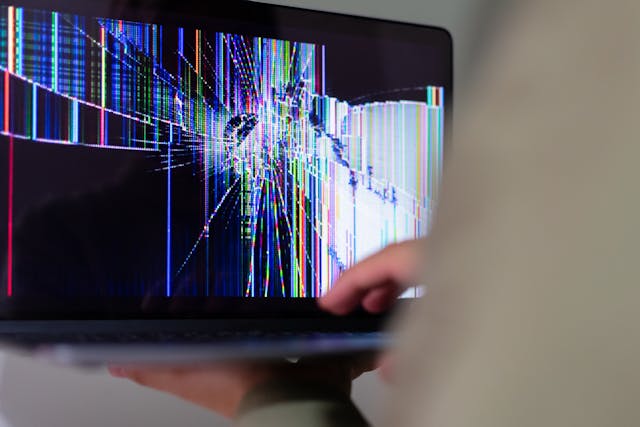Facing could not render animation unknown error in Krita? Learn real causes, step-by-step fixes, and smart tips to render smoothly.
The could not render animation unknown error in Krita usually appears when FFmpeg is missing, misconfigured, or unable to access files. Resetting the FFmpeg path, using a clean export location, and updating both Krita and FFmpeg fixes it in most cases. For those exploring AI-powered creative tools, understanding software troubleshooting is essential.
It’s the worst kind of silence. You finish your animation in Krita; the colors, the motion, the timing; everything feels perfect. You hit render. And then… a cold, emotionless pop-up:
Could not render animation unknown error.
No clues. No hints. Just that.
If you’ve seen that message, you know the frustration. You sit there wondering: Was it the layers? The format? The computer? It feels like the software just gave up on explaining itself.
That’s exactly what happened to me one night while exporting my first Krita short. Hours of work; blocked by one line of text. But here’s the thing: after a bit of digging (and a lot of caffeine), I realized it wasn’t Krita being mysterious; it was FFmpeg, the invisible hero behind Krita’s animation rendering.
Let’s walk through the real reasons this error happens; and fix it once and for all.
Article Breakdown
What the Error Really Means
When Krita throws the message “Could not render animation; unknown error,” it isn’t clueless. It’s reporting a failure in the process that combines your frames into a video.
That job belongs to FFmpeg, an external tool Krita uses to encode animations. If Krita can’t communicate with FFmpeg; or FFmpeg can’t access the files; Krita stops and gives this vague message.
Think of it like this: Krita is the artist, FFmpeg is the camera operator. If the camera operator isn’t there or doesn’t understand your instructions, the shoot just… doesn’t happen.
Main Causes Behind the Unknown Render Error
Here’s what’s actually happening under the hood. The error usually boils down to one of five root causes.
1. FFmpeg Is Missing or Misconfigured
Krita doesn’t render animations on its own. It calls FFmpeg behind the scenes. If Krita doesn’t know where FFmpeg lives on your system, rendering fails immediately.
Even if FFmpeg is installed, Krita might not be able to find it.
How to check:
- Go to Settings → Configure Krita → FFmpeg.
- Look at the path shown there.
- On Windows, it might look like C:\ffmpeg\bin\ffmpeg.exe
- On macOS, /usr/local/bin/ffmpeg
- On Linux, /usr/bin/ffmpeg
- If the box is empty or shows red text, Krita can’t find FFmpeg.
When that happens, the export process fails before it even starts.
2. File Paths With Symbols or Special Characters
This one’s sneaky. FFmpeg and Krita sometimes choke on filenames or folder paths that include special symbols or non-English characters.
For example:
- C:\Users\Ali\My Projects\Dragon.kra
- /Users/Marián/Documents/Animación Final/
Instead, use: C:\Users\Ali\Documents\KritaProjects\DragonAnimation\
Even an innocent space or accent mark can cause a crash because FFmpeg misreads it during encoding. Keeping file paths simple, short, and English-only helps avoid invisible parsing errors.
3. Wrong Output Format or Codec Mismatch
You might have the right setup but the wrong settings. Krita supports multiple video formats (MP4, WEBM, GIF, MKV), each needing a specific codec.
If you try to export using a codec FFmpeg doesn’t support; or one that’s missing from your version; rendering fails.
Examples:
- MP4 → needs H.264 codec
- WEBM → needs VP9 codec
- GIF → needs indexed colors and stable frame rate
If your format and codec don’t match, FFmpeg can’t encode the output; and Krita just reports “unknown error.”
4. Outdated Versions of Krita or FFmpeg
Compatibility issues are another major culprit.
Krita 5.2 and above works best with FFmpeg 6.x versions. Older FFmpeg builds or Krita releases sometimes break silently.
When FFmpeg changes how it handles video streams or file arguments, older Krita builds can’t interpret the results; causing failed renders without explanations.
Always make sure both programs are updated together. They’re like dance partners: if one changes the rhythm, the other needs to follow.
5. Permission and Storage Problems
It sounds basic, but many users forget this. If Krita doesn’t have permission to write to your chosen folder; or if your drive is full; rendering dies mid-process.
To test:
- Save to Desktop or Documents folder instead of Downloads.
- Make sure there’s at least 1 GB of free space.
- Temporarily disable antivirus or controlled folder access features that block apps from writing new files.
Sometimes the “unknown” part of the error is just Krita being denied access by your system.
Step-by-Step Fix Guide
Let’s go through each fix in order; from easiest to most technical. Follow these one by one, and you’ll catch the culprit.
Step 1: Reinstall or Reconnect FFmpeg
- Download FFmpeg from its official source.
- Extract it to a simple directory like C:\ffmpeg.
- Open Krita → Settings → Configure Krita → FFmpeg.
- Click Browse and point it to ffmpeg.exe in your FFmpeg folder.
- Restart Krita and render again.
If you still get an error, try rendering to a different folder (like Desktop). Sometimes Krita’s temp path conflicts with Windows permissions.
Step 2: Test Render a Small Animation
Before testing your big project, create a new file:
- 5 frames of simple movement (like a bouncing ball).
- Render as MP4 (H.264) using default settings.
If this small test works, your Krita installation is fine; meaning the issue lies inside your original project (like file paths, layers, or frame corruption).
Step 3: Export Frames First, Then Compile Manually
A powerful workaround: Instead of rendering directly to video, export as an image sequence.
- In Krita, go to File → Render Animation.
- Choose Image Sequence and export as PNG.
- Once done, open your system terminal or command prompt.
- Navigate to your folder of images and run:
ffmpeg -framerate 24 -i frame_%04d.png -c:v libx264 -pix_fmt yuv420p output.mp4
Replace the filenames as needed.
If this command succeeds, FFmpeg and your frames are fine; meaning Krita’s internal settings are what caused the “unknown error.”
Step 4: Check Krita’s Log Files
Krita keeps a quiet little log that records what happens under the hood. You can find it here:
- On Windows: %AppData%\Local\krita.log
- On Linux/Mac: ~/.local/share/krita/logs/
Open it in Notepad and scroll to the bottom. Look for lines that mention “ffmpeg” or “permission denied.” These logs can reveal the exact reason Krita failed, even when the app itself stays vague.
Step 5: Adjust Encoding Settings
Inside Krita’s Render Animation window, open Advanced Options. Try these tweaks:
- Lower frame rate from 60 to 24 fps.
- Change “Encoding Speed” to Fastest.
- Disable audio (especially if you haven’t imported sound).
- Switch to MPEG-4 (.mp4) format.
- Reduce resolution slightly.
Sometimes, heavy renders or complex codecs overload memory; and FFmpeg aborts mid-process, producing the unknown error.
Step 6: Reset Krita Configuration
If nothing helps, it might be time for a reset.
Go to Krita’s settings directory and delete or rename it:
- Windows: C:\Users\[Name]\AppData\Local\krita
- macOS: ~/Library/Preferences/krita
- Linux: ~/.config/krita
When you restart Krita, it’ll create fresh configuration files; often fixing buried conflicts or outdated cache entries.
Quick Comparison: Error Cause vs. Fix
| Cause | Common Symptom | Fix Summary |
|---|---|---|
| Missing FFmpeg | Render fails instantly | Reinstall or set correct path in settings |
| File Path Symbols | “Unknown error” after rendering starts | Use clean English-only file/folder names |
| Codec Mismatch | Blank or incomplete video output | Use H.264 codec, export as MP4 |
| Outdated Version | Persistent failure across projects | Update Krita and FFmpeg together |
| Permission Issue | Render stuck or no output file created | Change export location, check permissions |
Bonus Tip: Run FFmpeg Manually for Clarity
When in doubt, run the FFmpeg command Krita uses directly in your terminal. You can find the command in Krita’s log after a failed render; it starts with ffmpeg -i ….
Running it manually will show exact errors in real time, like:
- “Invalid argument” (bad codec)
- “No such file or directory” (wrong path)
- “Permission denied” (restricted folder)
That transparency turns guesswork into clarity.
Alternative Workflow: Manual Rendering Is Sometimes Better
Many experienced digital artists don’t rely on Krita’s built-in FFmpeg export at all. Instead, they prefer exporting frames and rendering manually every time.
Why? Because:
- Manual FFmpeg commands give full control.
- You can tweak quality, frame rate, bitrate, and codec.
- You avoid random UI bugs or GUI-based errors.
So here’s a balanced approach:
- Use Krita’s Render Animation tool for quick previews.
- Use FFmpeg manually for final high-quality exports.
It takes one extra step, but you gain stability and precision; especially for longer animations.
Common Mistakes That Trigger the Error
Here are a few overlooked details that often break rendering:
- Exporting to a drive with non-Latin characters in its name.
- Rendering directly to a network or cloud folder (like OneDrive).
- Using custom resolutions not divisible by 2 (e.g., 853×480).
- Having audio enabled when no sound file is imported.
- Including transparent layers with unsupported formats.
Fixing just one of these often makes the error disappear instantly.
FAQ’s
1. What causes the could not render animation unknown error in Krita?
It’s caused by FFmpeg misconfiguration, codec mismatch, bad paths, or permission issues preventing Krita from writing files.
2. How do I fix FFmpeg not found in Krita?
Install FFmpeg, locate its executable, and link it under Settings → Configure Krita → FFmpeg.
3. Can I export Krita animations without FFmpeg?
Yes. You can export an image sequence (PNG/JPG) and then use FFmpeg manually to assemble it into video.
4. Why does my Krita animation export as a blank video?
You may be using an unsupported codec or corrupted frame. Use MP4 (H.264) and test a small section first.
5. How do I avoid render crashes in Krita?
Keep file paths clean, disable unneeded layers, and make sure your FFmpeg version matches your Krita version.
Key Takings
- The could not render animation unknown error in Krita is almost always linked to FFmpeg setup or file paths.
- Always check that FFmpeg is correctly installed and connected in Krita’s settings.
- Avoid symbols, accents, or spaces in filenames or folders.
- Update both Krita and FFmpeg to compatible versions.
- If direct rendering fails, export as an image sequence and compile manually.
- Use MP4 with H.264 for the most stable results.
- Rendering is both technical and creative; sometimes it just takes patience and small adjustments to bring your art to life.
Additional Resources
- Krita Manual 5.2.0 documentation Krita Manual: A detailed walk-through on setting up and exporting animations from Krita smoothly, with explanations of every setting.
- IMG.LYFFmpeg: A clear breakdown of encoding formats, codecs, and how to use FFmpeg commands effectively for high-quality renders.



